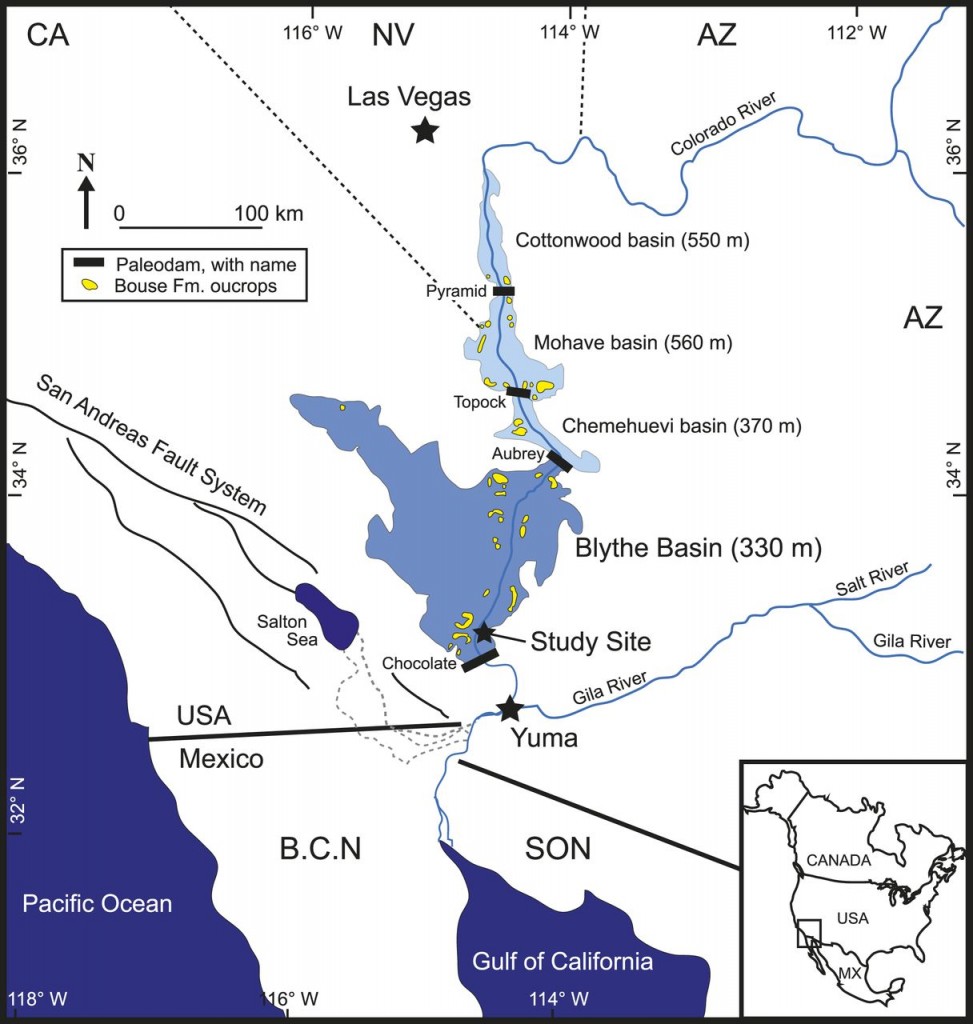In a neat new paper looking at sediment layers near Blythe, California, Jordan Bright of the University of California and colleagues (paper here, $ gated) argue that they’ve found evidence of the moment (in geological time, the “moment” is really hundreds of years) when the Colorado River made its first dash to the sea.
The Blythe Basin, they argue, was a vast inland lake/sea thing, until the water finally busted through the “Chocolate Mountain paleodam” in what must have been an impressive geologic woosh:
We suggest that Blythe basin was filled with a hydrologically complex Colorado River-fed lake that was abruptly breached in an over-spilling event at Chocolate Mountain paleodam near its southern margin….
The work involved looking at isotopic changes in the composition of rock layers in Hart Mine Wash, which is on the Arizona side of the Colorado River about 15 miles south of Blythe. Their map of the hypothesized lake is really cool:

Regional map showing the relationship between the course of the modern lower Colorado River, Blythe basin (intermediate blue), basins to the north that contain the Bouse Formation (light blue), proposed paleodams (black bars with names), and the study location (solid black star). Numbers in parentheses denote highest elevation (masl) of Bouse Formation in the respective basins. Figure modified from image provided by R. Dorsey.
